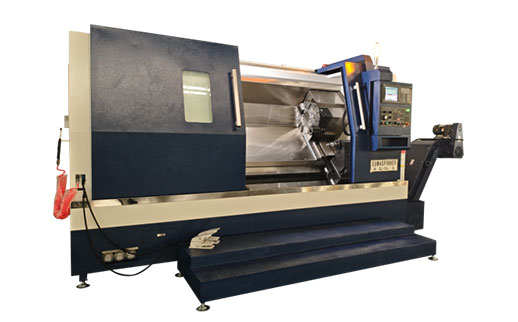In the manufacturing industry, machining processes play a vital role in transforming raw materials into precise and fully functional components. The most widely used machining techniques include milling, turning, and mill-turning. Each process has its own unique characteristics, applications, and advantages, allowing manufacturers to produce a variety of parts with different geometries and requirements. So what are the differences between them?
Milling and turning are two primary machining methods, each based on distinct principles. Milling involves cutting a workpiece by rotating the tool around it, resulting in a smoother and more precise surface. Turning, on the other hand, involves placing the workpiece on a rotating spindle and using the relative motion of the spindle and tool to remove material from the workpiece surface, ultimately creating the desired shape.
Mill-turning combines the use of both a turning tool and a milling cutter on a lathe. The three-dimensional motion of the tool head allows the milling and turning cutters to coordinate with each other, resulting in more precise and complex shapes.
Process description: Milling is a machining process that utilizes a rotating cutting tool with multiple teeth to remove material from a workpiece. The cutting tool moves in various directions relative to the workpiece, allowing for the creation of a wide range of shapes and features. This versatility makes milling one of the most popular machining methods in the industry.
Workpiece shape: It is suitable for machining workpieces with complex shapes and multiple features, including flat surfaces, stepped surfaces, and contours. It can handle both prismatic (box - like) and irregular - shaped workpieces.
Tooling: Milling cutters come in many types and sizes, including end mills, face mills, and ball - end mills, each designed for specific operations.
Applications: Common in the production of machine parts, molds, dies, and components for the aerospace, automotive, and electronics industries. For example, milling is used to create the intricate surfaces of a turbine blade or the cavities in a plastic injection mold.
Process description: Turning is a machining process that involves rotating a workpiece on a lathe while a cutting tool removes material from the surface of the workpiece. The cutting tool is fed into the workpiece along the axis of rotation, allowing for the creation of cylindrical, conical, and other rotational shapes. Turning is a fundamental machining process that is widely used in the manufacturing of parts with rotational symmetry.
Workpiece shape: Primarily used for producing cylindrical parts, such as shafts, rods, and tubes. It can also create conical shapes, tapers, and threads.
Tooling: Turning tools include single - point cutting tools, boring bars, and threading tools, which are selected based on the specific operation and workpiece material.
Applications: Widely used in the manufacturing of mechanical components that require rotational symmetry, like engine crankshafts, axle shafts, and hydraulic cylinders.
Process description: Mill - turning is a hybrid machining process that combines the capabilities of milling and turning operations in a single machine tool. This innovative technology allows for the production of complex parts with both rotational and non - rotational features in a single setup, eliminating the need for multiple machining operations and reducing the overall production time.
Workpiece shape: Ideal for complex parts that require both rotational and non - rotational features. It can handle parts with a combination of cylindrical surfaces, flats, slots, holes, and other intricate details.
Tooling: Mill - turning machines are equipped with a variety of tools, including turning tools and milling cutters, which are automatically changed as needed during the machining process.
Applications: Used in industries such as aerospace, where high - precision components with complex geometries, like blisks (bladed disks), are produced. It is also beneficial for manufacturing medical implants and other complex parts that demand tight tolerances and high surface finish.
In conclusion, milling, turning, and mill - turning are three distinct machining processes that offer different advantages and applications in the manufacturing industry. Milling is ideal for producing complex shapes and multiple features, turning is well - suited for machining rotational parts with high accuracy, and mill - turning combines the capabilities of both processes to produce complex parts with both rotational and non - rotational features in a single setup. By understanding the differences between these processes, manufacturers can select the most appropriate machining method for their specific production requirements, ensuring the production of high - quality parts with maximum efficiency and productivity.



GET A QUOTE